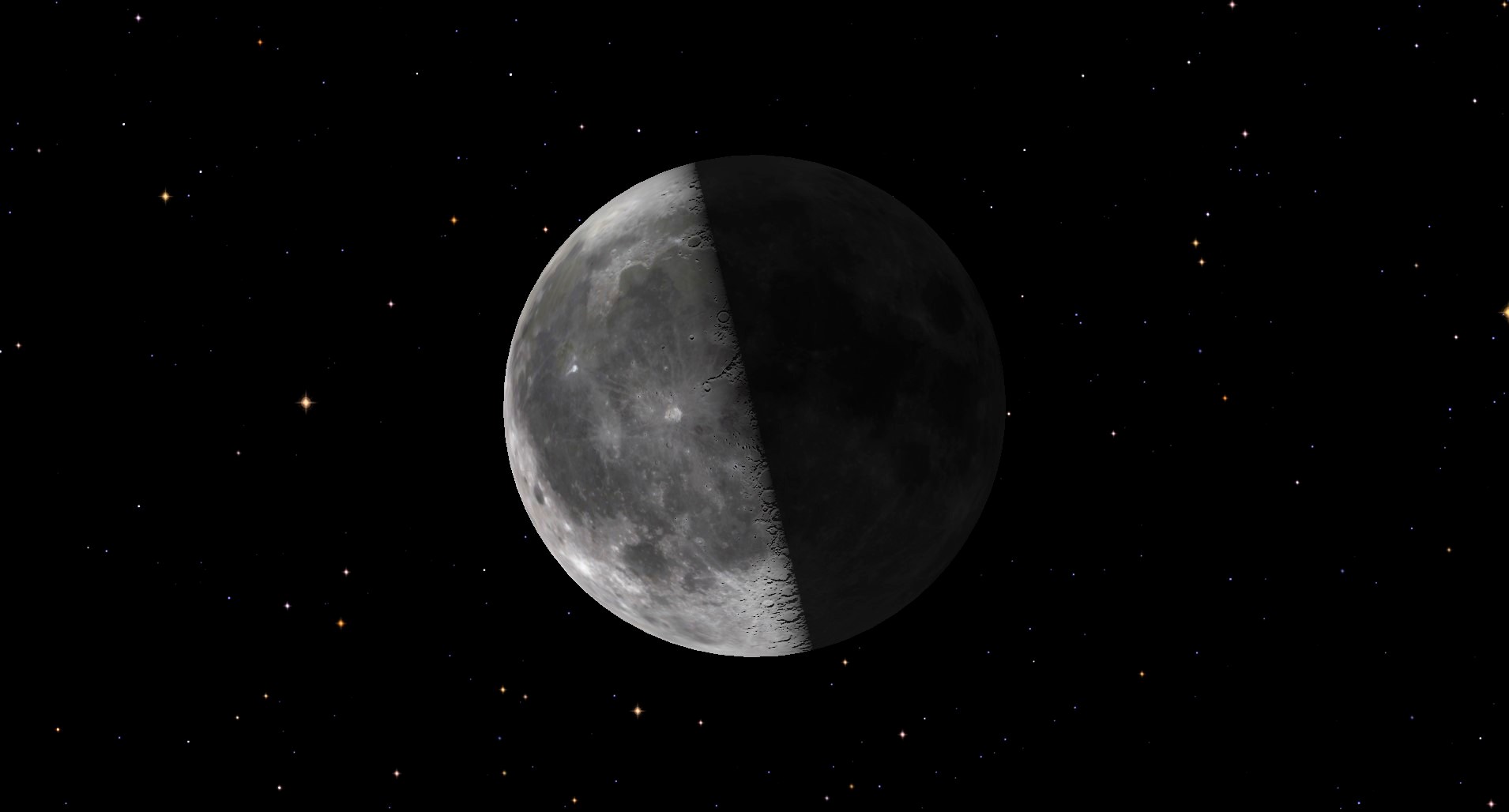Watch the half-lit last quarter moon illuminate the night sky tonight
The moon will be at 44% brightness.

What goes up, must come down. Or in the case of the moon, what goes around will go around again, and again, and again. Today, the moon reaches its third-quarter phase — the fourth of the year — in the pre-dawn hours.
Missed it? Don't worry. The moon will appear half-lit tonight, too, rising at 3:36 a.m. EDT (0736 GMT) in New York City, which is technically tomorrow morning, and setting after the sun has risen, according to skywatching site In-the-Sky.org.
The third-quarter moon, also known as a last-quarter moon, is the third of the moon's four phases, which change as the moon orbits the Earth. It's the halfway point between the full moon, which occurred on April 6, and the new moon, which will occur on April 20.
And there's something particularly exciting happening during that new moon: A rare hybrid solar eclipse. A hybrid solar eclipse occurs when a single solar eclipse appears as both a total eclipse and an annular eclipse, depending upon your location.
Related: What is the moon phase today? Lunar phases 2023
Read more: Get ready for a rare hybrid solar eclipse on April 20

Looking for a telescope to observe the moon or anything else in the sky? We recommend the Celestron Astro Fi 102 as the top pick in our best beginner's telescope guide. Don't forget a moon filter!
This solar eclipse will be visible from Western Australia, East Timor, and part of Indonesia, but people around the world will be able to tune into livestreams to witness the spectacular event.
If you plan on watching or photographing the upcoming solar eclipse, be sure to take proper precautions — never look directly at the sun with the naked eye.
Get the Space.com Newsletter
Breaking space news, the latest updates on rocket launches, skywatching events and more!
Following the exciting eclipse during the new moon, the moon will appear to grow larger over the following two weeks, reaching the next full moon on May 5. That moon is known as the Flower Moon, as it's the time of year when many flowers are in bloom.
If you're hankering for a closer look at the third-quarter moon, or any other spectacle in the night sky, take a peek at our guides to the best telescopes and best binoculars. And if you're planning on photographing the moon, we also have guides to the best cameras for astrophotography and best lenses for astrophotography.
No idea where to begin with your lunar photography? Don't worry — we have you covered with yet another guide; this one explains how to photograph the moon.
Follow Stefanie Waldek on Twitter @StefanieWaldek. Follow us on Twitter @Spacedotcom and on Facebook.
Join our Space Forums to keep talking space on the latest missions, night sky and more! And if you have a news tip, correction or comment, let us know at: community@space.com.

Space.com contributing writer Stefanie Waldek is a self-taught space nerd and aviation geek who is passionate about all things spaceflight and astronomy. With a background in travel and design journalism, as well as a Bachelor of Arts degree from New York University, she specializes in the budding space tourism industry and Earth-based astrotourism. In her free time, you can find her watching rocket launches or looking up at the stars, wondering what is out there. Learn more about her work at www.stefaniewaldek.com.









